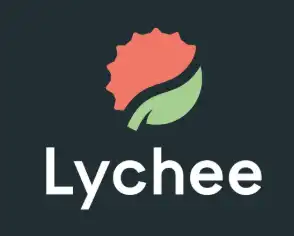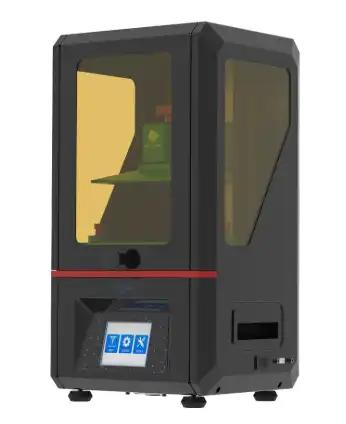Resin printers are devices that use photosensitive resins to create three-dimensional objects.
Unlike FDM printers (Fused Deposition Modeling), which melt and extrude plastic filament, resin printers solidify layers of liquid resin using ultraviolet (UV) light.
Resin printers have gained great popularity in recent years, especially in applications that require a high level of detail and precision.
This process allows achieving a level of detail and precision that is difficult to match with other technologies.
Types of Resin Printers
Within the family of resin printers, there are different technologies. Some of them are,
SLA printers use a UV laser to cure the resin layer by layer. They are known for their high precision and are ideal for applications that require extreme detail.
DLP printers use a LED screen or a projector to cure entire layers at once.
They are faster than SLA for small parts but may have slightly lower resolution due to the pixelated nature of the projected light.
A modern variant of DLP, MSLA printers use an LCD screen as a mask to control the UV light.
They are more affordable than DLP and offer a good balance between speed and quality.
Comparison with FDM Printers
When comparing resin printers with filament printers, we find that both technologies have their advantages and disadvantages.
High level of detail: Resin printers can reproduce extremely fine details (making them ideal for miniatures, jewelry, dental prototypes).
Smooth surfaces: Unlike FDM printers, which leave visible layer marks, resin printers produce smooth and uniform surfaces.
Speed for small parts: For small and detailed pieces, resin printers are often faster than FDM, as they can solidify entire layers in seconds.
Handling Resins: Liquid resins are toxic and can cause skin irritation. It is necessary to use gloves and eye protection when handling them.
Laborious post-processing: Washing and curing the pieces requires time and additional materials, such as isopropyl alcohol and a UV curing box.
Limited size: Resin printers usually have smaller print areas than FDM.
Material costs: Resins are more expensive than the filaments used in FDM printers.
Here is a summary in a table,
| Feature | Resin Printers | FDM Printers |
|---|---|---|
| Detail | Extremely high | Moderate |
| Surface | Smooth and uniform | Visible layer marks |
| Speed | Fast for small parts | Slower |
| Material Costs | High | Low |
| Post-processing | Laborious | Minimal |
| Print Size | Limited | Larger |
| Piece Strength | Low | High |
How Does a Resin Printer Work?
The resin printing process follows these general steps:
Preparing the 3D Model: Just like in FDM printers, you need a 3D model in STL format.
This file is loaded into a specific slicing software for resin printers, such as Chitubox or Lychee Slicer.
Layer Slicing: The software divides the model into very thin layers (typically between 0.025 mm and 0.1 mm thick) and generates a file that the printer can interpret.
Printing Process:
- In SLA printers, a UV laser projects the shape of each layer onto the surface of the resin, selectively solidifying it.
- In DLP printers, an LED screen or a projector emits UV light to solidify the entire layer at once.
- After each layer, the print platform rises slightly (or descends, depending on the printer’s design) to allow the next layer to cure.
Cleaning: Once printing is complete, the piece must be washed in isopropyl alcohol (or water if it is water-soluble) to remove uncured resin. It is then fully cured under UV light to achieve maximum strength.
Post-processing: Finally, you need to cure the piece under UV light. You can use the sun (intense, midday), but normally you should have a UV light.
Additionally, the piece must be rotated so that light hits all sides.
The “horrible part” is the cleaning and post-processing
Where to Start with Resin Printers?
If you are interested in exploring this technology, it is common to start with a mid-range printer, such as the Anycubic Photon or the Elegoo Mars, which offer a good balance between price and performance (I’m not being paid to say that 😅)

You will also need a curing chamber (essential). They sell some cheap UV boxes for about €40-50. That might be enough to start.

On the other hand, I highly recommend that you buy water-washable resins. The biggest hassle of resin printers is managing the resin. If you avoid isopropyl alcohol, you will make your life much easier.
There’s not much more to it. Care, gloves, and a bit of practice, and soon you’ll be creating pieces and Warhammer figurines that will impress your friends with your high level of detail.